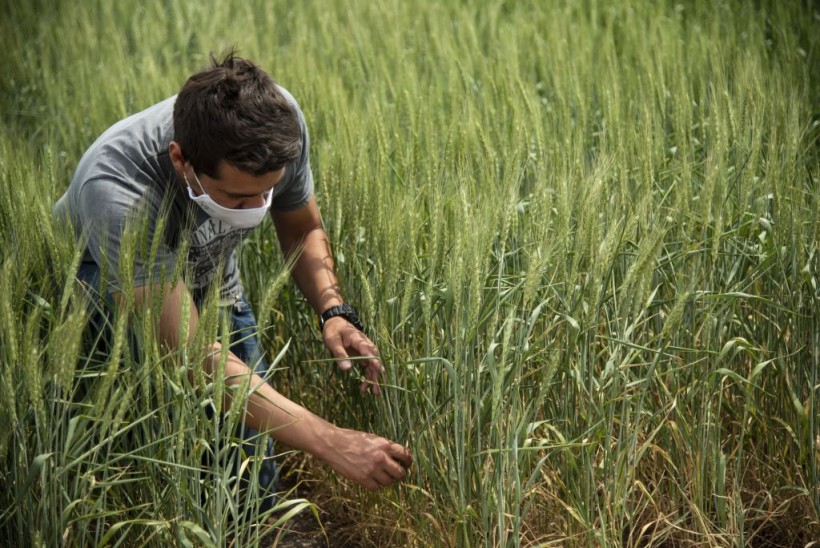The technology could be employed to help crops fight pests or turn more resistant to drought in a shorter period and at a lower cost compared to making lines of genetically modified crops.
As specified in a Phys.org report, researchers at Japan-based RIKEN Center for Sustainable Resource Science have developed a new method to enhance the quality of crops minus the need to create special "genetically modified plants."
Instead of changing plant genomes, the new method depends on a spray that's introducing bioactive molecules into plant cells through their leaves.
This new technology can now directly modify genomes and develop GMOs or genetically modified organisms which include GM food. Nonetheless, making transgenic plants takes money, time, and still has not gained widespread public backing.
ALSO READ: Exploring Nonhost Resistance, or Why Pathogens Choose Which Plants to Harm

The agriculturist in charge of the experimental field, Giuliano Guerrini, inspects wheat genetically modified by the Bioceres agricultural biotechnology company growing at a plantation in Pergamino, northwest of Buenos Aires.
Entering the Cell Walls of Plants
Researchers at RIKEN CSR led by Masaki Odahara have developed a substitute for GM food that can solve such problems. For instance, instead of changing the genome of plants so that it does not express a specific gene, the same gene can be blocked on the go by injecting a specific bioactive compound into the plant. In this circumstance, the bioactive compound is taken into the cells of the plants by a carrier that can enter the plant cells' cell walls.
While the notion might be simple, making it happen was a struggle. On top of designing a method of introducing bioactive molecules into the plans, explained Odahara, there's a need for them to consider a delivery approach that would be practical for "cultivated crops" under actual agricultural conditions. The researchers concluded that the approach would be through a spray that could be used over large fields somewhat easily.
Cell-Penetrating Peptides
Many nanoparticle types can infiltrate plant cells. The study authors focused on cell-penetrating peptides or CCPs as they can also target particular constructions inside plant cells like chloroplasts. Specifically, the first challenge was to identify which CCPs are best when using a spray.
As indicated in the study published in ACS Nano, the researchers tagged natural and synthetic CCPs with fluorescent yellow, sprayed them on plant leaves, and measured an amount of fluorescent in the leaves "with a confocal laser-scanning microscope" at different time points.
After carrying out this procedure in standard laboratory Arabidopsis thaliana, as well as in many types of tomatoes and soybeans, the study investigators discovered many natural CCPs that were able to enter into the leaves' outer layer, and in some circumstances, even deeper.
Further investigations showed that this approach was effective when plasmid DNA was attached to the CCPs, and analysis revealed that genes were efficiently expressed in the leaves of both A. thaliana and soybeans after being transported into the cells through an aqueous spray.
Yellow Fluorescent Expression Silenced
The study investigators also discovered that by including other biomolecules and nanostructures in the spray solution, they could provisionally increase the number of pores found in the leaves, which increases the amount of spray taken up by the plant.
A similar Nano Magazine report said that frequently, crop yield can be enhanced by implanting or knocking out genes. Following the creation of a transgenic plant that overexpresses yellow fluorescence in the leaves, the researchers attached RNA that interferes with the expression of fluorescent protein to a CCP.
As expected, spraying the leaves with this compound silenced yellow fluorescence expression. Odahara said the result was crucial as any substitute to genetic modification must be able to reach the same useful outcome.
Related information about genetically modified plant is shown on the National Center for Case Study Teaching in Science's YouTube video below:
RELATED ARTICLE: Avocado Global Demand: Shortage Alarms Hipsters & Foodies
Check out more news and information on Agriculture on Science Times.














